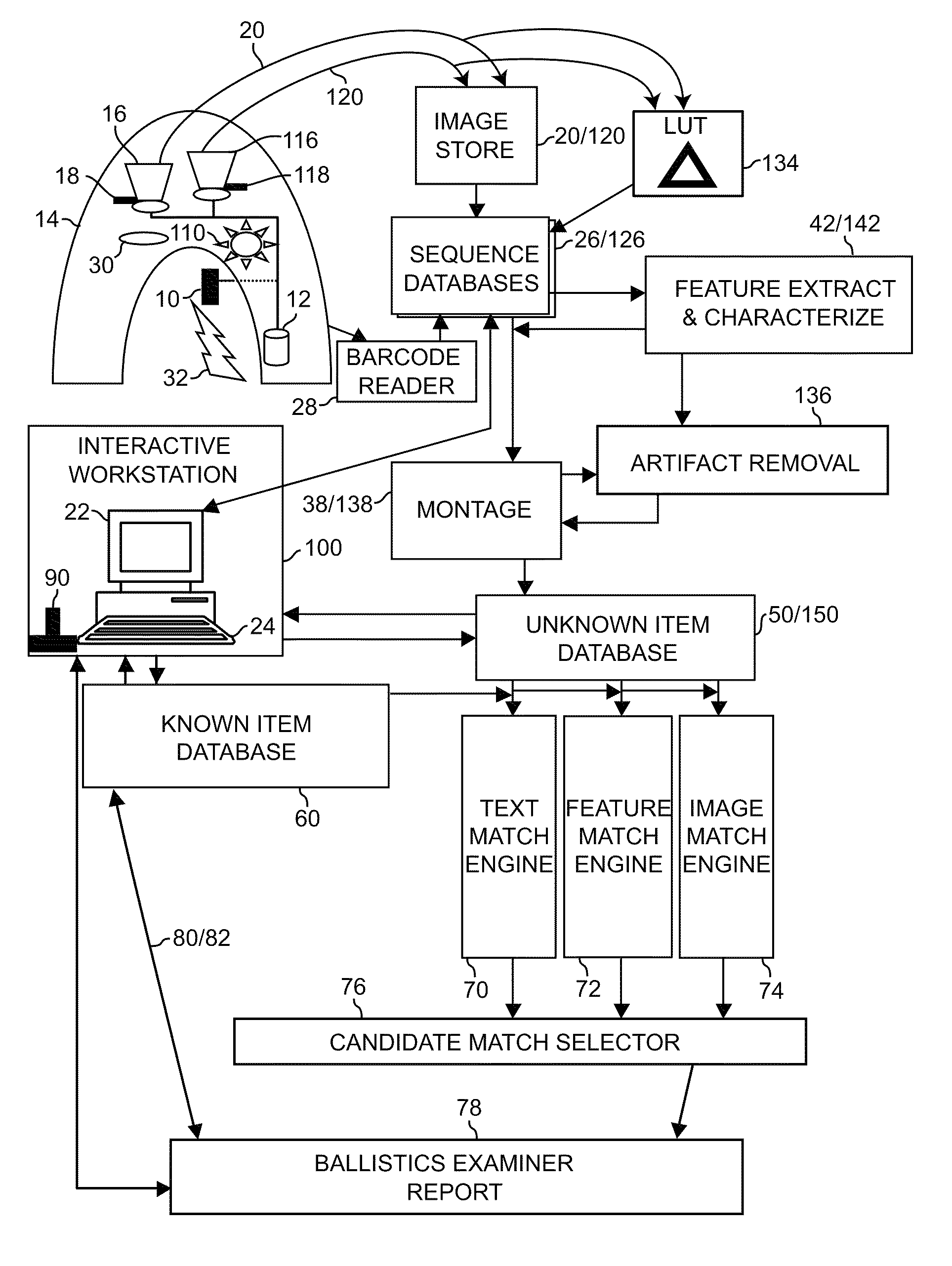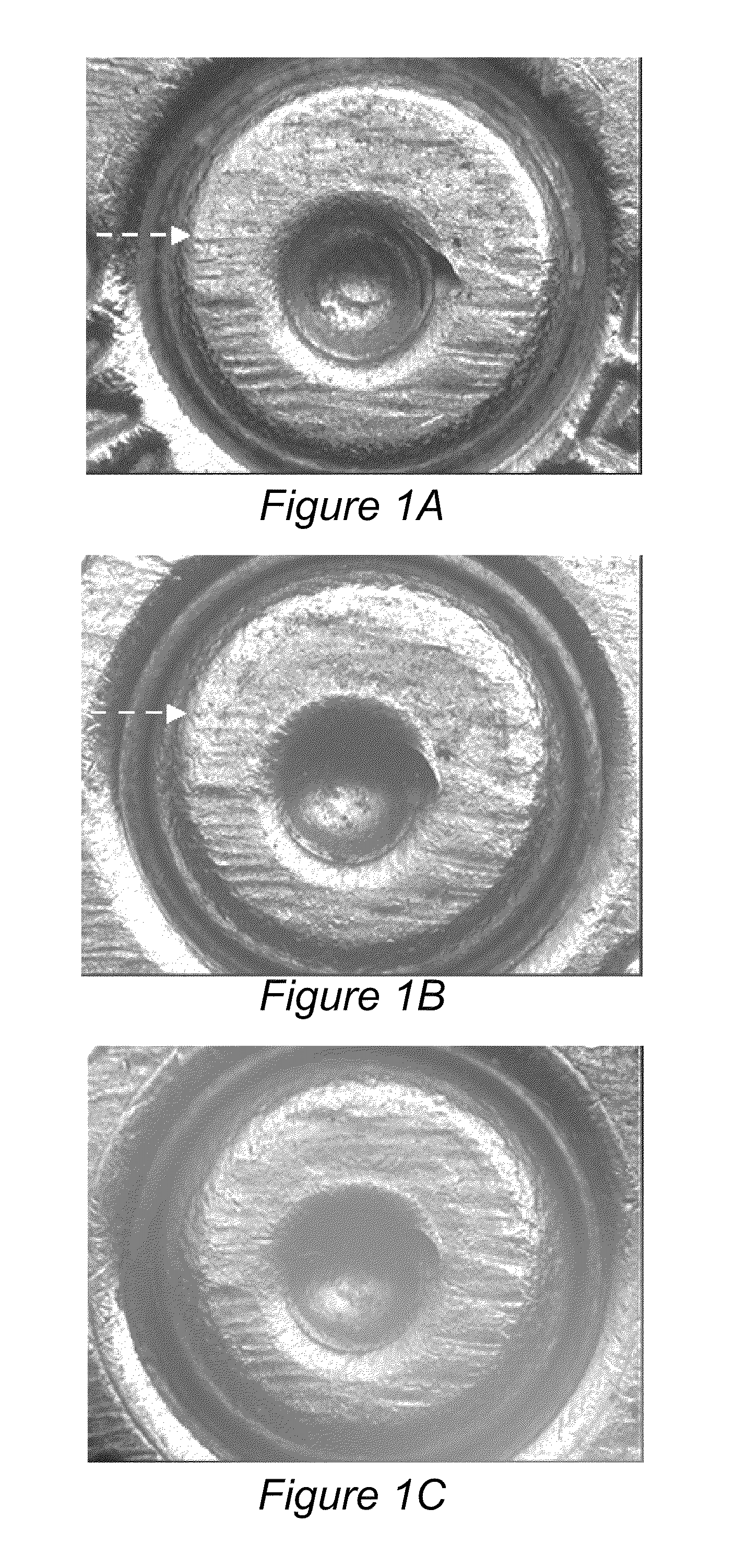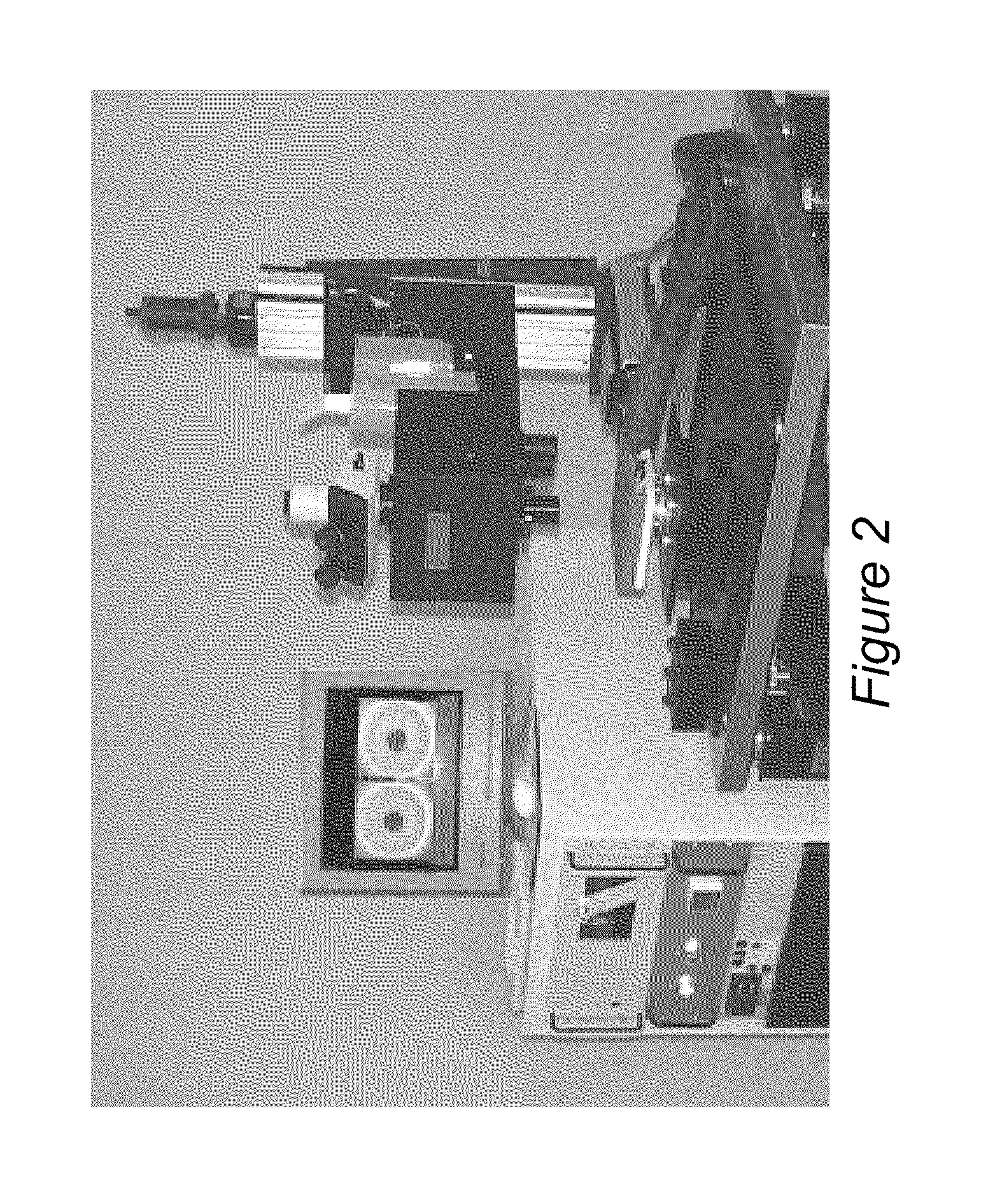Method and apparatus for alignment, comparison and identification of characteristic tool marks, including ballistic signatures
a tool mark and alignment technology, applied in the field of tool mark identification, can solve the problems of bullet expansion and softening of the surface of the bullet, the likelihood of the ejector going into the casing, and the particular prone to softening of the bull
- Summary
- Abstract
- Description
- Claims
- Application Information
AI Technical Summary
Benefits of technology
Problems solved by technology
Method used
Image
Examples
first embodiment
DETAILED DESCRIPTION OF THE FIRST EMBODIMENT
Using Infrared Images to Refine Visible Image Details for Ballistics Identification Image and Information Capture
[0177]As shown in FIG. 13, a ballistic item 10 is placed in a holder 12 and surrounded by a shroud 14 covering it and an infrared camera 16 such that external lighting and heating sources are blocked. The camera focus mechanism 18 is varied over a range such that all details of the infrared image of the ballistic item are clearly captured in a sequence of infrared images 20.
[0178]Optionally, one or more spectral filters 30 can be installed and additional sequences of infrared images obtained. Optionally, a heater 32 can be used to raise the temperature of the ballistic item and additional sequences of infrared images obtained for the item at the elevated temperature and as it cools.
[0179]A controlled light source 110 is then turned on to illuminate the ballistic item and a video camera 116 is used to produce a sequence of visibl...
second embodiment
Detailed Description of the Second Embodiment
Ballistics Identification Through Matching Infrared Characteristics
[0187]When infrared imaging alone is used for ballistics identification, without use of corresponding visible images, then components 116, 118, 120, 126, 138, 142, 134, 150 and references to visible images, sequences, features, and montages can be eliminated from the apparatus description.
Image and Information Capture
[0188]A ballistic item 10 is placed in a holder 12 and surrounded by a shroud 14 covering it and an infrared camera 16 such that external lighting and heating sources are blocked. The camera focus mechanism 18 is varied over a range such that all details of the infrared image of the ballistic item are clearly captured in a sequence of infrared images 20.
[0189]Optionally, one or more spectral filters 30 can be installed and additional sequences of infrared images obtained. Optionally, a heater 32 can be used to raise the temperature of the ballistic item and ad...
third embodiment
Detailed Description of the Third Embodiment
Automation of Toolmark Identification
[0203]The original application, now U.S. Pat. No. 7,068,808, continued in U.S. patent application Ser. No. 11 / 319,230, specified the use of infrared imaging to capture emissivity variations induced on surfaces by the creation of toolmarks. This continuation in part specifies the use of variations in spectral emissivity within a wavelength band and temperature range selected to match the characterizing toolmark features. Infrared images display apparent temperatures that are the product of actual temperature and emissivity at each pixel location. Infrared images in which the actual temperature is uniform across the image are therefore images of emissivity differences only. Most metals and various other materials have emissivities that vary strongly with wavelength. To emphasize that infrared toolmark images contain no temperature variations they may be referred to as “spectral emissivity maps”. When wave...
PUM
 Login to View More
Login to View More Abstract
Description
Claims
Application Information
 Login to View More
Login to View More - R&D
- Intellectual Property
- Life Sciences
- Materials
- Tech Scout
- Unparalleled Data Quality
- Higher Quality Content
- 60% Fewer Hallucinations
Browse by: Latest US Patents, China's latest patents, Technical Efficacy Thesaurus, Application Domain, Technology Topic, Popular Technical Reports.
© 2025 PatSnap. All rights reserved.Legal|Privacy policy|Modern Slavery Act Transparency Statement|Sitemap|About US| Contact US: help@patsnap.com



